Front Tine vs. Rear Tine Tiller: What’s the Difference?
-
- Last updated:
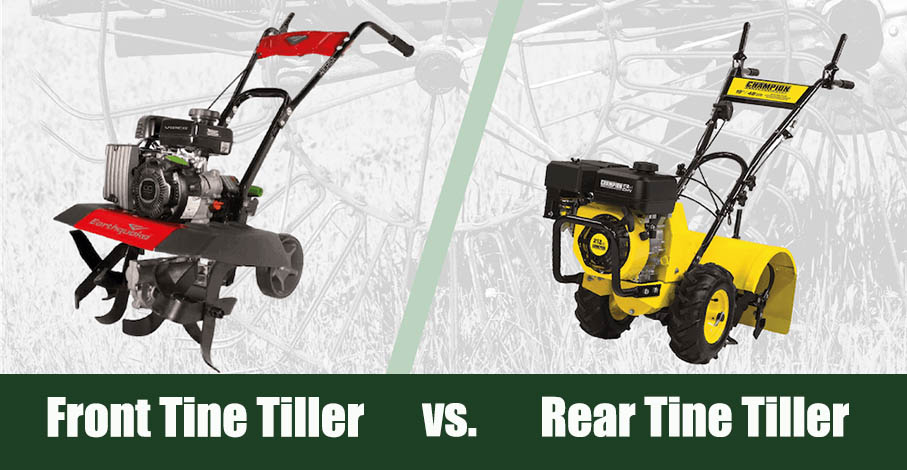

Front and rear-tine tillers are used to break up the soil in preparation for planting. They are commonly used to till a garden for herbs or plants, and they can also be used to prepare a lawn are for new grass seeds. Usually powered by gas or electric, there are both front tine and rear tine tillers.
Both types of tiller have their advantages and pitfalls. Below, we look at the differences between these two types of similar machine to help you determine which is the best for your requirements and which will get the job done efficiently, cutting through compacted soil and leaving the perfect planting medium.
Front and rear tine tillers do have the same overall design. They use four curved blades that cross in alternative directions. The gas or electric motor forces these blades into the ground and turns and churns up compact soil.

Front Tine Tiller Overview
In a front tine tiller, the tines, or curved blades, are in front of the motor. The tines pull into the earth and, as they rotate, they pull the machine along with them. As such, it is the tines that do all the work, cutting the soil and pulling the machine along. The wheels on the device are used to keep it steady and to reduce friction so that pulling the device is easier on the motor.
This type of tiller is smaller and lighter than a rear tiller. Because of this it is more easily maneuvered around obstacles, but it does take more effort to cover a similar distance. It also takes more effort to control the front tine. What’s more, it can only usually till a few inches down and is better suited to soil that has been worked in the past. It is not considered suitable for virgin earth.
As well as being lighter, this type of tiller is less expensive than the rear tine. They are easier to maintain and attract lower maintenance costs, too.

Tilling in Small Spaces
The engine is positioned directly above the tines which, in turn, are in front of the wheels. This allows for closer tilling, compared to rear line tillers. As such, this type of tiller is most often used in small yards or gardens, and when you need to cut a very definite and precise line. The front tine tiller is smaller and narrower, too, which means that it is lighter and easier to maneuver, even around difficult and confined spaces.
More Effort Required
Both front and rear tine tillers are powered. The front tine tiller uses the tines themselves to pull the device along, and it is down to you to hold the tiller in place, prevent it from racing off ahead, and to ensure that all of the ground is properly cut up and prepared.
It can take some work to prevent this kind of device from running away. Thankfully, front tine tillers tend to be smaller so are easier to manage and control. The smaller size of the tiller also means that it takes more effort to complete an area of the same size and space than it would with a rear tine tiller.
- Lightweight
- Inexpensive
- Good for tight spaces
- Shallow tilling
- Small tilling area
- Forward only

Rear Tine Tillers Overview
With a rear tine tiller, the engine is at the front and the tines at the rear. The wheels receive power from the engine, which means that this model tends to be easier to control and weighs less. While a single tine tiller’s tiller can only move forward, a rear tiller has tines that can move forward or backward. In some models, the tines will only move in the opposite direction to the wheels. With some models, though, the tines can be moved in either direction at any time, which allows for quicker completion of the job and a more precise cutting action.
The rear tine tiller takes less effort to control. The wheels themselves are powered, which means that as the engine runs, the machine is propelled by the wheels and there is no need to hold the machine back.
Although it is easier to operate, the rear tine tiller does not offer the same level of control. The tiller is wider and larger. It cannot be moved as easily, which means that it is often preferred for covering large areas, rather than completing work on small and tight spaces.
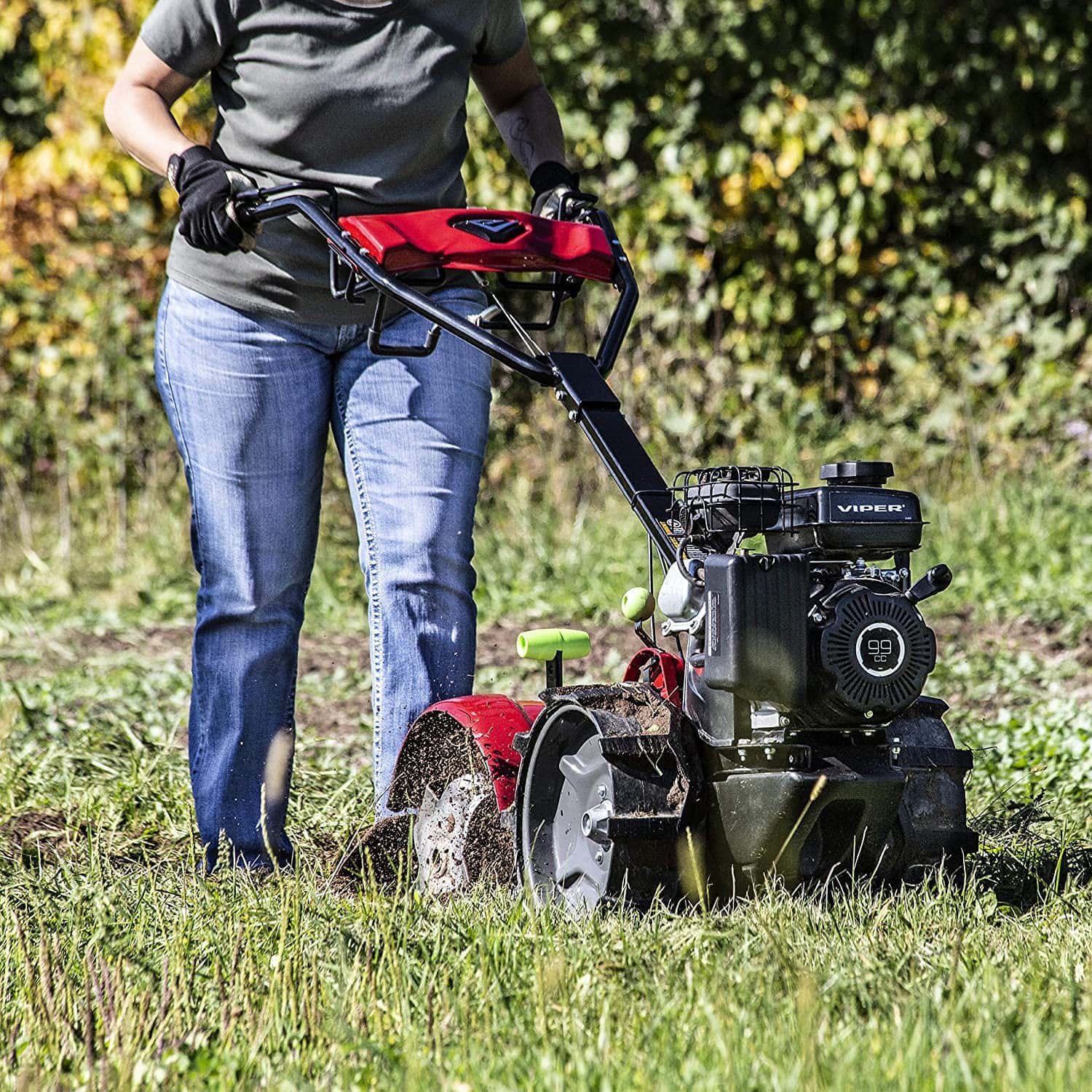
The tiller tills deeper than the front tine tiller. It also cuts with greater force, which means that the rear tine tiller is well-suited to tilling soil and earth in all conditions, no matter how compact it is. This is the type of machine that is preferred with virgin soil that has not previously been cut up or tilled.
Its greater range of features and additional parts and machinery make the rear tine tiller more expensive than the front tine model.
Cover Large Spaces Quickly
The rear tine tiller is wide and long. While it is more difficult to control and will not cover tight corners or difficult spaces as efficiently, it will cover large spaces much quicker. Despite covering more ground, it digs deeper, which means that it does a better job of tilling previously unworked ground.
Less Effort Required
The wheels are propelled, too, which means that you don’t have to hold the tiller back. It will do its work and cover the ground with less effort on your part. You can even have the tines of some models move backwards and forwards to make short work of the ground.
- Deep tilling
- Wide and large areas covered
- Propelled wheels
- Expensive
- No precise tilling
Which Type of Tiller Is Best for New Soil?
The rear tine tiller is more powerful, has wider tines, and digs deeper than the front tine tiller. As such, it is better equipped to cut through heavily compacted soil and earth. It will cut through new soil that has not been tilled before, and some of the more powerful models will do so with relative ease. In fact, the rear tiller will work on rocky ground, or any ground that is covered in debris, caked in mud, or overrun with plants and leaves.
Which Offers the Most Maneuverability?
Even though the rear tine tiller has powered wheels, which means that it moves freely and more easily for the user, it is considered to have less maneuverability. It is heavy, its tines are wider, and it will take a lot more effort to take it on a new course. In contrast, the front tine tiller has the engine over the tines, which are in front of the wheels.
As such, the engine helps to push the tines down and while you will need to hold the tiller back as the tines drag it along with surprising force, it allows for more precise movement. The front tine tiller is better equipped for small spaces, tight corners, and very precise tilling.
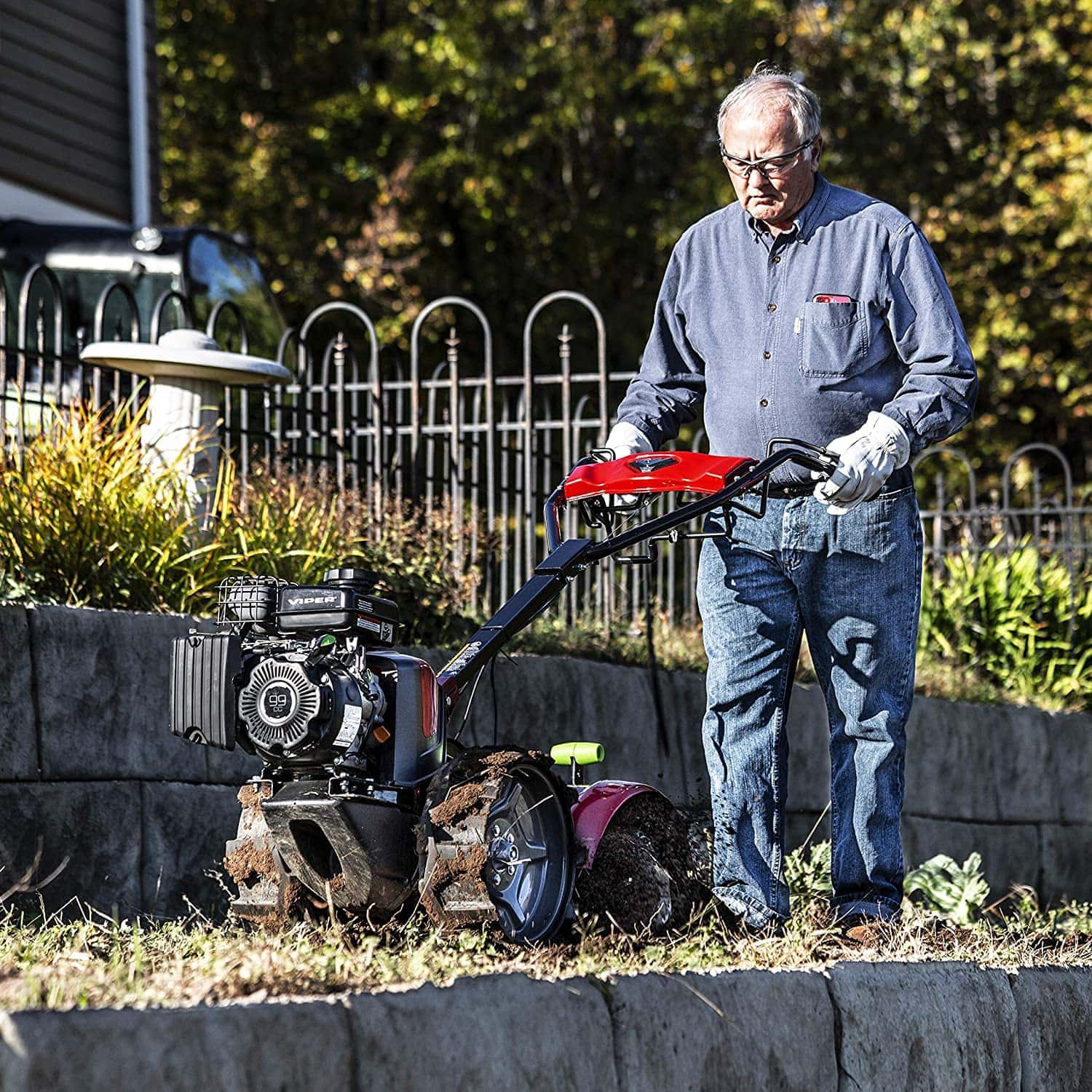
Is the Front Tine Tiller Easier to Use?
The rear tine tiller has powered wheels, which means that the engine does the job of pulling the machine forward. It also allows for more controlled power, in this respect. However, it is the front tine tiller that is considered easier to maneuver around objects and obstacles.
The tines themselves provide the power and while this does mean that you can only enjoy forward-moving tines and that you will have to hold the tiller back to ensure that it adequately cuts through the ground, the positioning of the tines makes it easier to move the tiller around.
Finally, however, it is the rear tiller that has the largest tilling area. Tines cover a wider area and are longer, which means that they till a larger patch in the same amount of time as a front tine tiller.
Does the Front or Rear Tine Tiller Cost More?
The rear tine tiller uses more power, which means that it has a more powerful engine. It also has more advanced features and is larger. As such, the rear tine tiller, which can cover a much larger area in a short space of time, costs more than the front tine tiller.

Quick Look: Our Top Choices
| Image | Product | Details | |
|---|---|---|---|
Our Favorite Front Tine Tiller
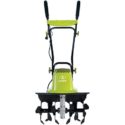 |
Sun Joe TJ604E 16-Inch Electric Garden Tiller |
|
CHECK PRICE |
Our Favorite Rear Tine Tiller
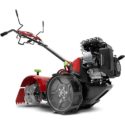 |
Earthquake 37037 Pioneer Dual-Direction Rear Tine Tiller |
|
CHECK PRICE |
Our Favorite Front Tine Tiller: Sun Joe TJ604E 16-Inch Electric Garden Tiller

The electric-powered front-tine Sun Joe tiller is cheap but tears through the soil at 370 RPM, to a depth of 8 inches. It can clear an area 16 inches wide. Its electric motor could be a little more powerful, but it is easy to maneuver, which is what most people are looking for in this kind of tiller device.
Our Favorite Rear Tine Tiller: Earthquake 37037 Pioneer Dual-Direction Rear Tine Tiller
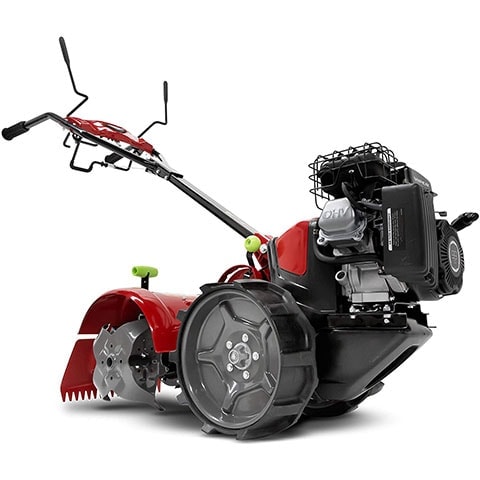
The Earthquake 37027 is aptly named. Its 99cc gas engine has dual direction capabilities, which means that you can greatly reduce the time it takes to clear an area. Despite its power, it is lighter and quieter than most rear-tine models. It has a wider 18-inch depth than the Sun Joe, while enjoying powered wheels that make it easier to manage.

Conclusion
Tillers are a convenient, powered method of turning soil and freeing up compacted soil. Front and rear tine tillers have their own benefits and their own uses. Front tine tillers tend to be more maneuverable and cheaper, while rear tine tillers will cover greater distances and can work on brand new soil that has not yet been worked. Front tine tillers are usually cheaper than rear-tine models, too.
Related Reads:
Contents

